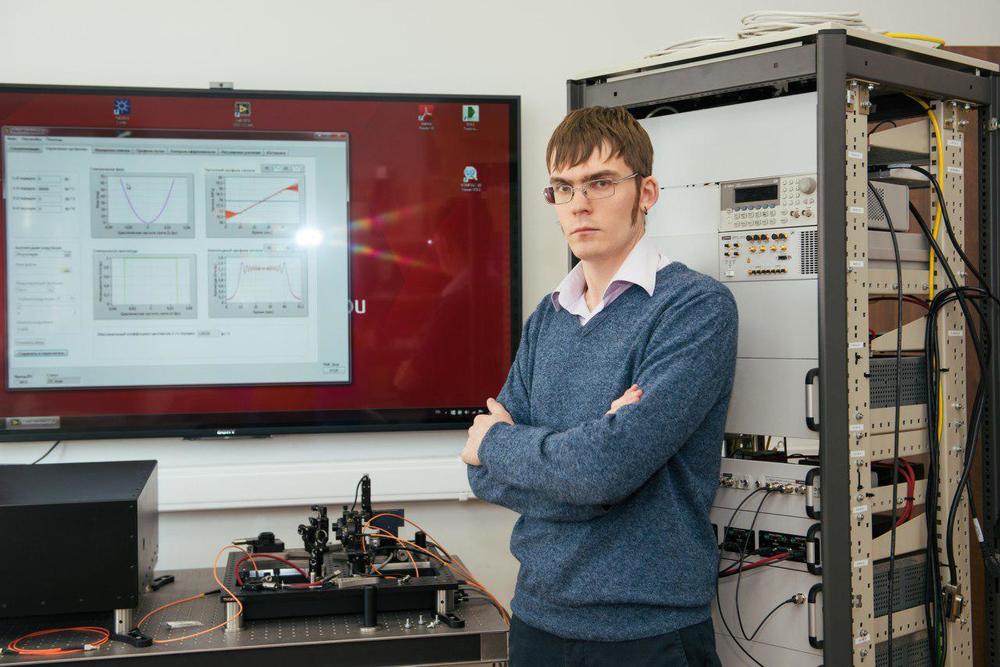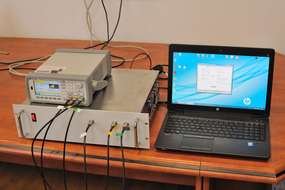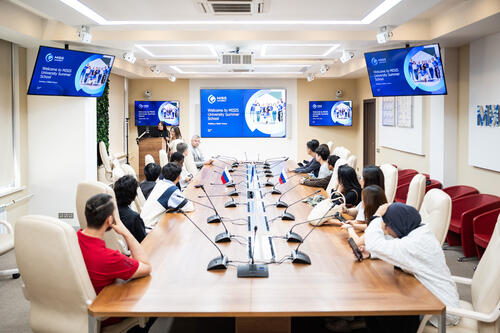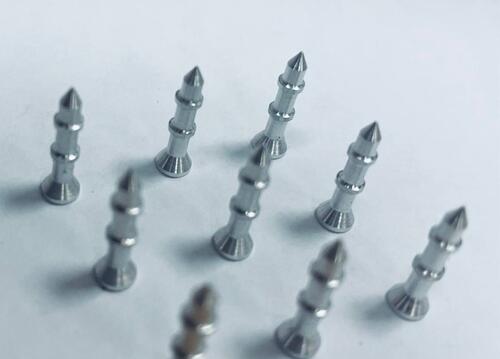Lasers have become an integral part of modern technology and are able to penetrate into our life even deeper if scientists solve several key problems.
Scientists from the NUST MISIS R&D Center of Acousto-optics, jointly with colleagues from the Institute of Applied Physics of the Russian Academy of Sciences (Nizny Novgorod), have managed to overcome one of these problems—the heterogeneity of outgoing laser pulses included in the design of laser devices. The study results were published in the Photonics Research journal.
The essence of the problem derives from the principle of a laser’s operation and hides in the mechanism of the laser pulse’s amplification. In and of itself, a laser beam is simply light generated at a particular wavelength. Laser pulses initially generated tend to be weak at first, and require strengthening for most practical applications. This means running the laser through a photomultiplier tube, where it passes from one semitransparent mirror to another. This increases the number of photons (and hence, the laser’s power) dramatically, but the power of individual pulses increases unequally, meaning that what is produced is a beam of pulses without a uniform strength.
This problem has been known to scientists for a very long time, and they struggle with it in different ways. For example, to generate identical pulses at the output, scientists create distortion in the flow of incoming pulses. However, up until now, it was possible to adjust pulses only at the level of the whole beam.
Researchers from the NUST MISIS R&D Center of Acousto-optics (Konstantin Yushkov, Alexander Chizhikov and Vladimir Molchanov) together with a team from Nizhny Novgorod’s Institute of Applied Physics of the Russian Academy of Sciences, led by Professor Efim Khazanov, have created a computer-aided system allowing for the digital correction of laser beam pulses, thus taking control of laser beam technology to a fundamentally new level.
Creation of the new laser pulse radiation sources with controllable intensity and frequency of beam pulses is necessary for fundamental and applied purposes.
“With the help of our technology, we will be able to better control the energy of charged particles in particle accelerators, which will make it easier and more efficient to find new elementary particles and more quickly reach the ’dark matter’” that scientists are looking for. Also, the technology may be applied for the more precise heating of the plasma in prospective fusion reactors. There are other real-world applications as well:by monitoring the intensity of each pulse, we will be able to form a binary or octal code with beams. This will make it possible to encode information, varying the time between two close-together pulses by cutting out unnecessary ones. As a result, we will receive an ordinary pulse laser with an incredible capacity to transmit information. For example, if lasers were not capable of transmitting anything more complicated than simple Morse code before, precision control allows them to send the equivalent of video signals", said Konstantin Yushkov, one of authors of the development and a leading research associate at NUST MISIS’s R&D Center of Acousto-optics.
Research into this form of information transfer was first conducted by scientists around the world in the early 1990s. However, the technology at the time did not allow this possibility to be implemented on a mass scale. Now, thanks to efforts like those of this Russian group of physicists, the possibility for mass scale expansion is coming closer to becoming a practical reality.Another application for the technology is in medicine. In a situation where surgeons are able to have precise control over every pulse, eye surgery, lithotripsy (the removal of kidney stones), and any other procedures where laser technology is involved will become dramatically more precise and easier to perform.
This system of controlling laser pulses has undergone successful testing at Nizhny Novgorod’s Institute of Applied Physics of the Russian Academy of Sciences.




